You don't want to start your day knowing that winds keep blowing out your furnace's pilot light or water heater. This can be very frustrating for everything you need to do that requires hot water, especially showering.
You might wonder why this happens and what proper fixes you must make. Well, wonder no more! We did plenty of research about this problem, and here's what we've found below!
The most common reason why this issue happens is a bad thermocouple. Check whether this issue is not due to wind but rather a dirty thermocouple that needs cleaning.
If you're in a particularly windy place, you can install an outer chimney or B-vent extension. It will help to divert the wind from entering your heating systems.
Read more! We will share below how to stop winds from blowing out your pilot light properly.
We will also address how you know if the thermocouple is going wrong. So, without further ado, let's dive in!
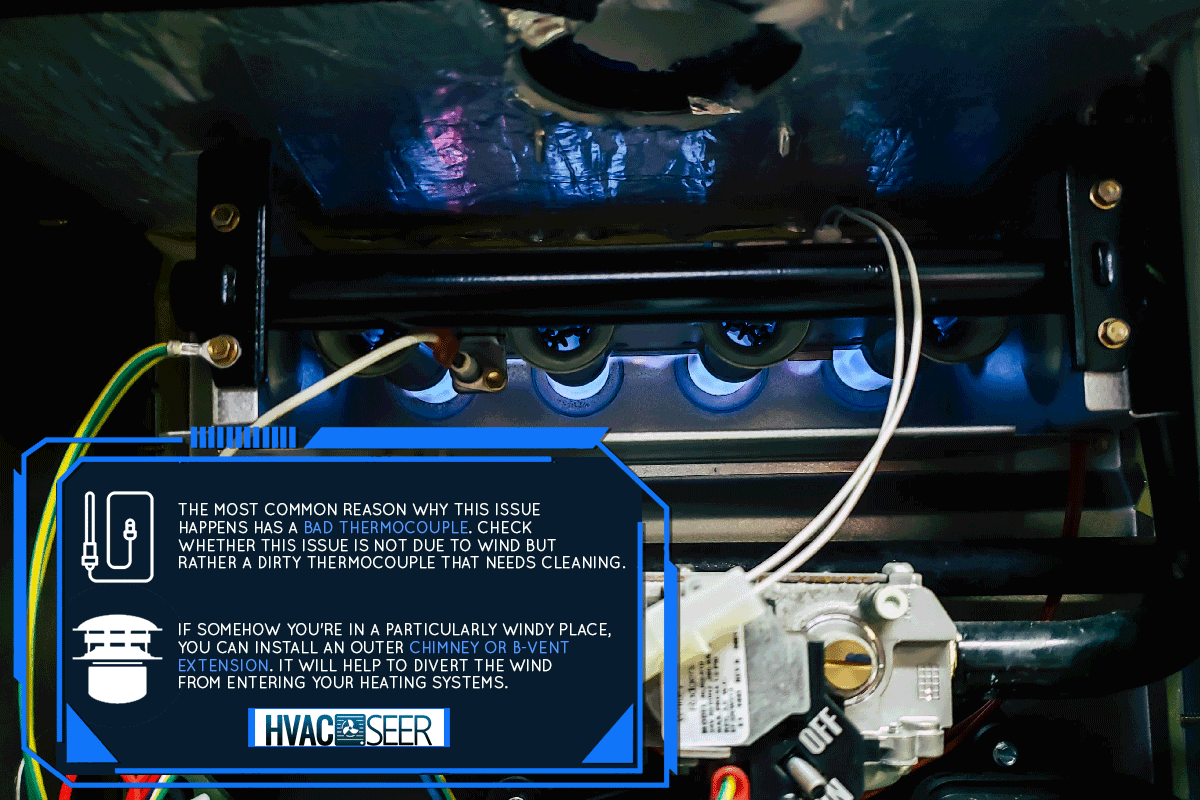
How Do You Stop Wind From Blowing Out Your Pilot Light?
Finding out how to stop the wind from blowing out your pilot light is critical during cold months since this issue may occur for multiple reasons, not just wind.
Still, there are a few things you'll need to check to stop this issue.
Follow our checklist below to solve this issue:
Thermocouple
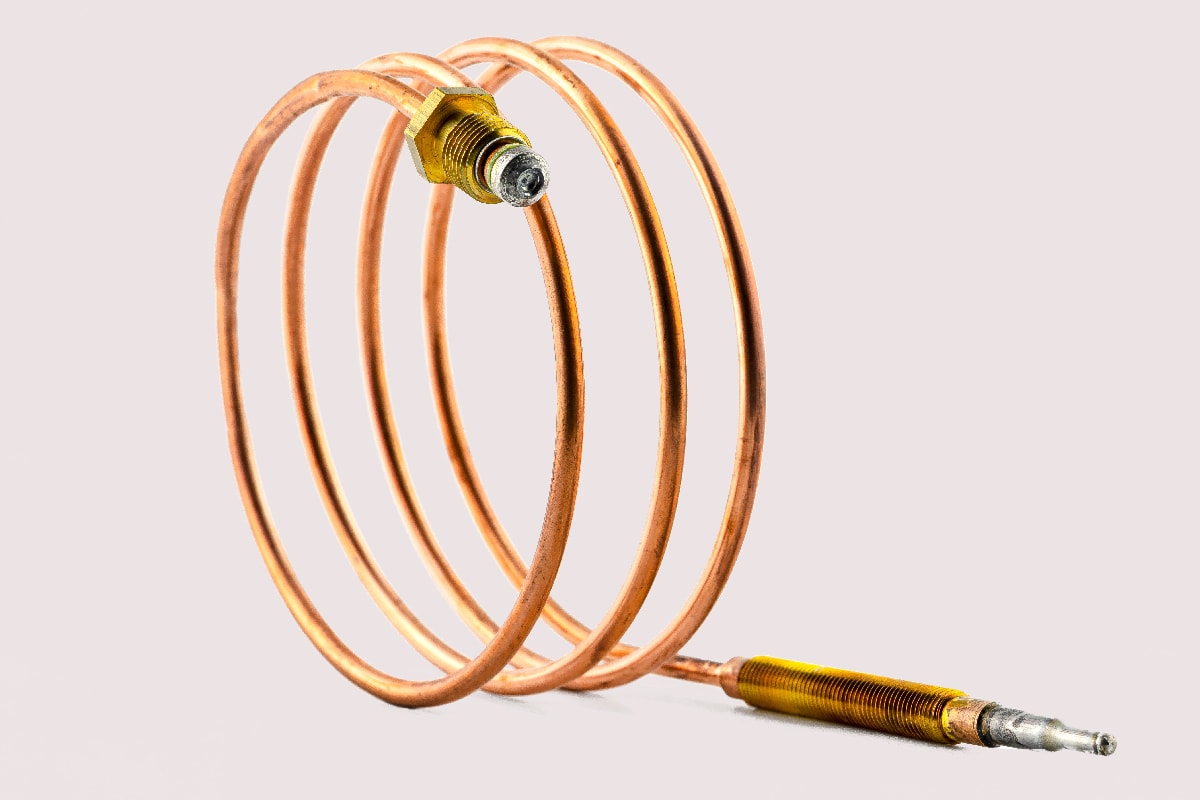
The thermocouple determines whether the pilot light in your furnace or water heater is on or off. If the pilot light goes out, the thermocouple turns off your heater.
Forcing you to reignite the pilot light to turn it on again.
Check this Thermocouple on Amazon.
Checking it is a must thing because it arises when your thermocouple is defective or dirty. You may have a perfectly functioning pilot light, but it will not heat your water if the thermocouple can't detect it.
The thermocouple needs to be clear of any dirt or debris. You can put an all-purpose cleaner on the towel and remove any dirt buildup in the thermocouple.
Downdrafts
Water heaters are attached to chimneys or ventilation ducts so that cold air can circulate and keep them operating correctly.
You should inspect the ventilation if you link your heater directly to your ventilation system.
Throughout the service life of your ventilation system, there's no surprise if it has cracks or leakage. The potential of a downdraft shifting back into your heater and blowing out your pilot light increases when cool air enters.
Chimney Cap
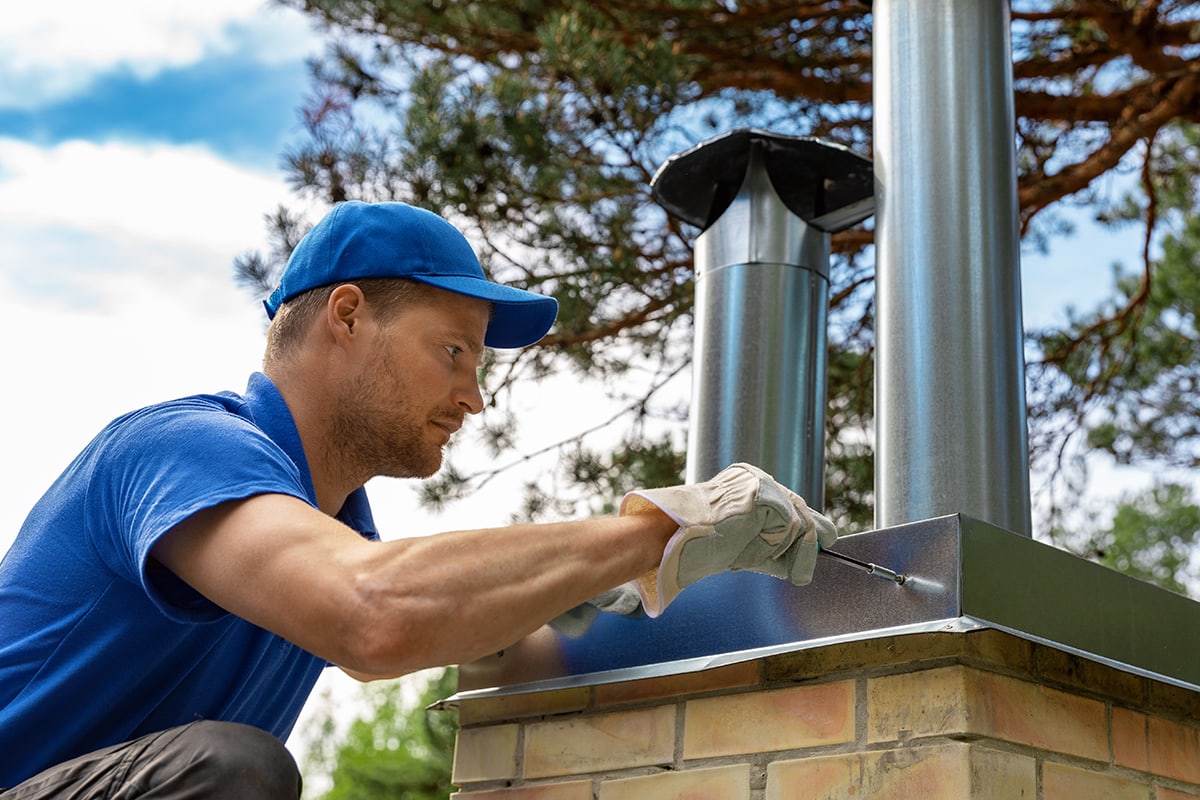
Ensure that your chimney cap isn't rusted and correctly in place. Otherwise, this could also be causing trouble in your pilot light.
Remember that if you're uncomfortable with heights, do not climb your chimney to solve this issue. Let the expert do this job for you and examine the chimney cap for the possible problem.
Firebox Cover Must Be Leak-Free
The firebox cover serves as a shield for your pilot light against external damaging elements. Furthermore, it ensures no air or other external debris will enter the heater system.
If facing issues, you must examine your firebox cover thoroughly to eliminate any possible air openings.
Use a heat-resistant sealant to seal all openings you've found to ensure it will not affect your pilot light again.
View this heat-resistant sealer on Amazon.
Gas Release Valve And Electric Heating Parts
Like the thermocouple, the gas release valve is essential for starting a pilot light. If your water heater uses electricity instead of gas as its fuel source, you'll need to check its electric heating parts.
The pilot light is kicking in and keeps going because of the gas release valve or electric heating parts. Your pilot light won't work without it.
Check whether the gas release valve has dirt or debris keeping it from operating well.
Over time, some components may malfunction early on and need a replacement, especially the electric heating parts.
How Do I Know If My Thermocouple Is Bad?
This particular device is most often to blame if the water heater or any related appliances keeps going its pilot light. So, if it's not the wind that causes your pilot light to go out, then checking the thermocouple is a smart idea.
A thermocouple with a probe connected to a copper pipe and a port for screwing it into the gas valve.
If the thermocouple is functioning correctly, you may be able to detect 30 to 40 millivolts of electricity.
Using a multimeter, you can perform this test on your own. However, a helper offers a huge help in maintaining the pilot flame.
See this Multimeter on Amazon here.
Follow our simple steps below to know whether your thermocouple is going bad or not:
- Unscrew the thermocouple from the gas valve bracket.
- Carefully set your multimeter to get the millivolts reading.
- Turn on the pilot light and keep the gas control knob to produce a flame.
- Allow the probe to get hot for about a minute.
- Set the multimeter lead on the thermocouple shaft and the other lead on the connector.
- The reading result should be less than 25 millivolts; otherwise, your thermocouple has gone bad.
NOTE: Performing these steps on your own is never a bad idea. However, remember that an HVAC specialist is knowledgeable enough to do this job for you!
How Do You Turn On The Water Heater Pilot Light?
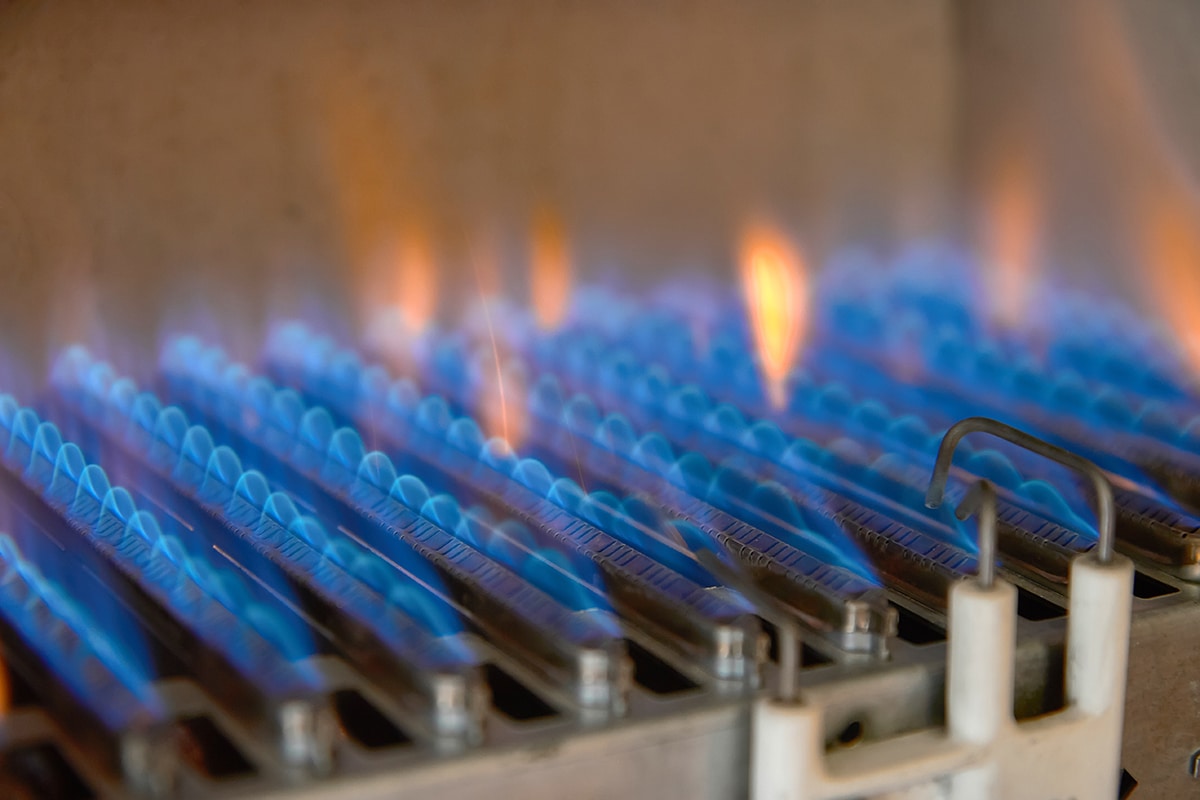
The pilot light in gas and oil-fuel water heaters constantly glows and ignites the burner when hot is needed. An air bubble in the gas line occasionally causes the pilot light to run out of fuel and go out.
Strong winds may also cause heaters outside enclosures to lose their pilot lights. Relighting a water heater is simple if you use the correct ignition source.
Use the easy steps below to light up again your pilot light correctly:
- First, switch OFF the heater's control knob and let the gas or oil clear out for five minutes.
- There's a white cover at the bottom of the tank; remove it and pull out its burner to access the pilot light pipe.
- Locate the pilot light inside the burner's chamber.
- Usually, you'll find the pipe in an oblong shape with a 1/8–1/4 inch diameter size.
- Switch the control knob to PILOT and hold the red handle near the control knob.
- Light the pilot light using a match or pistol lighter while holding the red handle for around one minute.
- After one minute, you can release the red handle and observe the flame.
- The red handle was not pressed long enough if the flame blew out.
- Repeat the process until the pilot flame remains steady.
- Securely reattach the burner's cover along the bottom tank cover.
- Switch back ON now the control knob and set it to the medium flame position.
WARNING! Before performing this process, if you ever smell gas or heating oil around the heater. Switch off its supply valve immediately and call your HVAC contractor to solve the problem immediately!
Should The Pilot Light Be On All The Time?
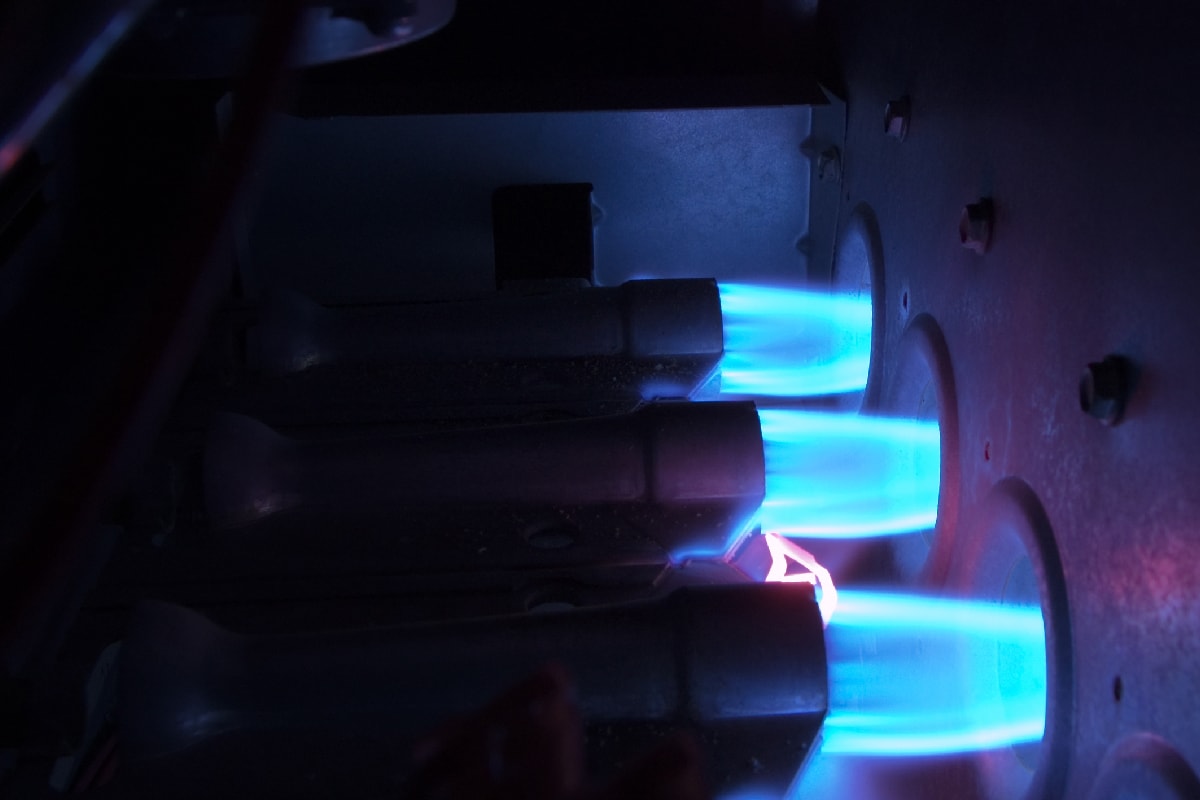
You should always light the pilot light of your furnace unit to function if it is in use. But when it's warmer outside, and gas furnaces aren't in use, some homeowners switch off the pilot light.
Remember that a gas furnace only needs a tiny amount of gas to run the pilot light. Therefore, shutting off the pilot light during warmer months can save you energy costs.
Your total annual fuel utilization efficiency (AFUE) will always depend on how efficient the system you're using is.
Using a high-efficiency heating system, you can expect to reduce your power bills yearly by 90–98.5%.
To Wrap Up
Always keeping your heating system in the best shape to serve you hot water is critical.
Whether wind or the other components cause the pilot light to go out, identifying the root cause is your priority.
Finding out our detailed information above to prevent wind from blowing out your pilot light is beyond happiness.
We hope that with your knowledge, you'll always keep your heating system in its entire state.
If you've found our article informational, look into our other posts below!
Furnace Pilot Light Keeps Going Out – What To Do?
Gas Heater Not Working But Pilot Light On – What Could Be Wrong?



